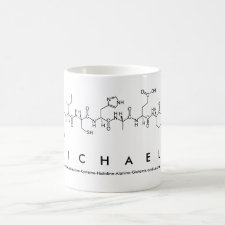
Authors: Kirsch N, Alexander C, Davies S, Whitcombe MJ
Article Title: Sacrificial spacer and non-covalent routes toward the molecular imprinting of "poorly-functionalized" N-heterocycles.
Publication date: 2004
Journal: Analytica Chimica Acta
Volume: 504
Issue: (1)
Page numbers: 63-71.
DOI: 10.1016/S0003-2670(03)00510-5
Alternative URL: https://www.researchgate.net/publication/224048005_Sacrificial_spacer_and_non-covalent_routes_toward_the_molecular_imprinting_of_poorly-functionalized_N-heterocycles
Abstract: A comparison of three different methods for the imprinting of small aromatic heterocycles containing only a single nitrogen atom, for the preparation of specific analytical phases, was carried out. A conventional non-covalent approach to the imprinting of pyridine using methacrylic acid as the functional monomer was compared with two sacrificial spacer methods, in which heterocycles were imprinted as covalent template analogues. The results of binding experiments showed that discrimination based on ligand size was possible when polymers were prepared using a silyl ester-based template. The most selective polymer was able to bind pyridine in preference to quinoline or acridine which is opposite to the trend predicted by the pK(HB) values for the three ligands. Curve fitting of the isotherm for pyridine binding to this polymer to the Langmuir model gave an approximate K-d of 1.1 +/- 0.1 mM and a binding site concentration of 57 +/- 2 mmol g(-1). Acridine binding did not show saturation behaviour and was non-specific and cooperative in nature. (C) 2003 Elsevier Science B.V.. All rights reserved



Join the Society for Molecular Imprinting

New items RSS feed
Sign-up for e-mail updates:
Choose between receiving an occasional newsletter or more frequent e-mail alerts.
Click here to go to the sign-up page.
Is your name elemental or peptidic? Enter your name and find out by clicking either of the buttons below!
Other products you may like:
 MIPdatabase
MIPdatabase









